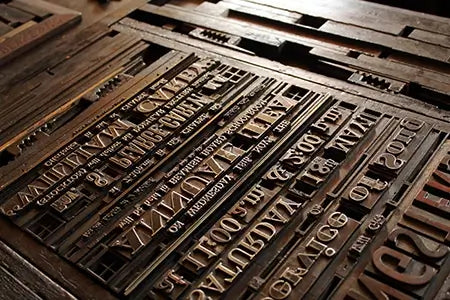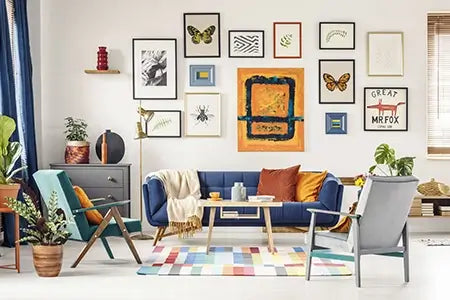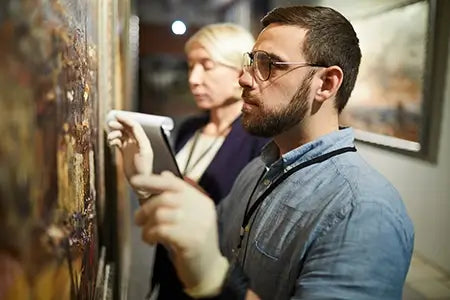The evolution of art printing technologies has profoundly influenced the accessibility, production, and conceptualisation of artworks. As we navigate through the digital age, these advances are reshaping the landscape of visual culture and the art market. This blog explores how technological innovations, particularly 3D printing, have transformed art printing.
The Digital Revolution in Traditional Printing

The advent of digital printing technologies marked a significant departure from traditional art printing methods, such as lithography, etching, and screen printing. Digital printing has democratised the production of art, making it more accessible to artists and consumers alike. High-quality prints can now be produced quickly and at a lower cost, without the need for complex setups or large print runs. This shift has opened up new avenues for artists to experiment with and distribute their works, thereby expanding their reach and influence.
Digital printing has also enhanced the precision and versatility of art reproduction. Artists can now replicate the minutiae of their original works with astonishing accuracy, capturing every brushstroke and colour nuance. This fidelity has blurred the lines between original artworks and reproductions, challenging traditional notions of authenticity and value in the art world.
The Rise of 3D Printing in Art
3D printing, or additive manufacturing, has emerged as a groundbreaking tool in the realm of art printing. This technology allows artists to create three-dimensional objects by layering materials according to digital models. The implications for the art world are profound, as 3D printing transcends the limitations of traditional sculpture and installation methods.
One of the most significant impacts of 3D printing in art is the unparalleled freedom it offers artists in terms of form and material. Artists are no longer constrained by the physical and technical limitations of traditional sculptural techniques. Complex, intricate structures that were once impossible to create by hand can now be printed with precision. This has led to a new wave of creativity and innovation in sculptural art, as artists explore the potential of this technology to bring their most ambitious visions to life.
Moreover, 3D printing has facilitated new forms of collaboration and interactivity in the art world. Artists can share digital models of their works online, allowing others to print and interact with these artworks in their own spaces. This participatory approach to art production and distribution represents a shift towards a more inclusive and democratised art world.

Environmental Considerations and Future Perspectives
While the technological advancements in art printing offer numerous benefits, they also raise important environmental considerations. The sustainability of printing materials and processes, particularly in the context of 3D printing, is an area of growing concern. As the use of these technologies continues to expand, finding eco-friendly alternatives and recycling methods will be crucial to mitigating their environmental impact.
Looking ahead, the fusion of art and technology is set to continue, with emerging technologies like augmented reality (AR) and virtual reality (VR) poised to further revolutionise the art printing landscape. These tools could offer even more immersive and interactive art experiences, challenging our perceptions of space, materiality, and the very nature of art itself.
In conclusion, the impact of technology on art printing is profound and multifaceted. Digital and 3D printing technologies have not only transformed the production and dissemination of art but also expanded the boundaries of artistic expression. As we move forward, the ongoing dialogue between technology and art promises to yield even more innovative and impactful creations, reshaping our cultural landscape in the process.





















Leave a comment
This site is protected by hCaptcha and the hCaptcha Privacy Policy and Terms of Service apply.